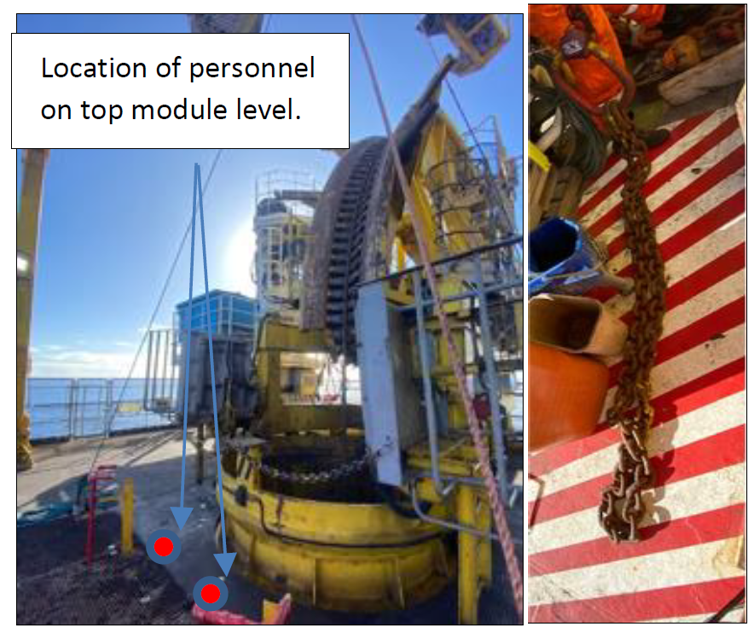A recent IMCA Safety Flash focuses on an incident in which crew were involved in the second end transfer of a 4″ (10cm) production flexible up to the top module of the pipelay system, to provide lessons learned.
The incident
As the second end was being transferred, the tensioners were in the following position: upper tensioner – open, lower tensioner – closed. To allow the weight to be transferred onto the A&R wire the lower tensioners were opened. This then resulted in the production flexible rotating due to the residual torsion that had been built up within the line. A 16.5te chain used for the transfer of the second end was still attached to the pull-in head, as the flexible pipe began to rotate, this chain also spun. Two crew members who were observing the operation were stood nearby and were almost struck by the spinning chain.

What was the underlying cause?
- Key people involved were inexperienced in this specific activity and were not familiar with the task in hand
- There was a failure to identify the risk posed from the chain still being attached to the flexible pipe.
- There was a language barrier:
- Part of the team were unable to speak English;
- The Task Risk Assessment for this operation was only available in English.
- The procedure did not identify when the chain should be removed nor other mitigation measures.
Lessons learned
- Ensure important documentation such as Task Risk Assessment, procedures and checklists are available in the languages of the crew doing the work;
- Ensure it is specified in procedures or checklists when rigging or any other items are to be attached or removed;
- Always remove the rigging after transferring loads to the A&R; when removal of rigging is not possible, suggest additional mitigation actions in the Task Risk Assessment.
- One mitigating measure was to install a gate with signage restricting access to the top module.






























































